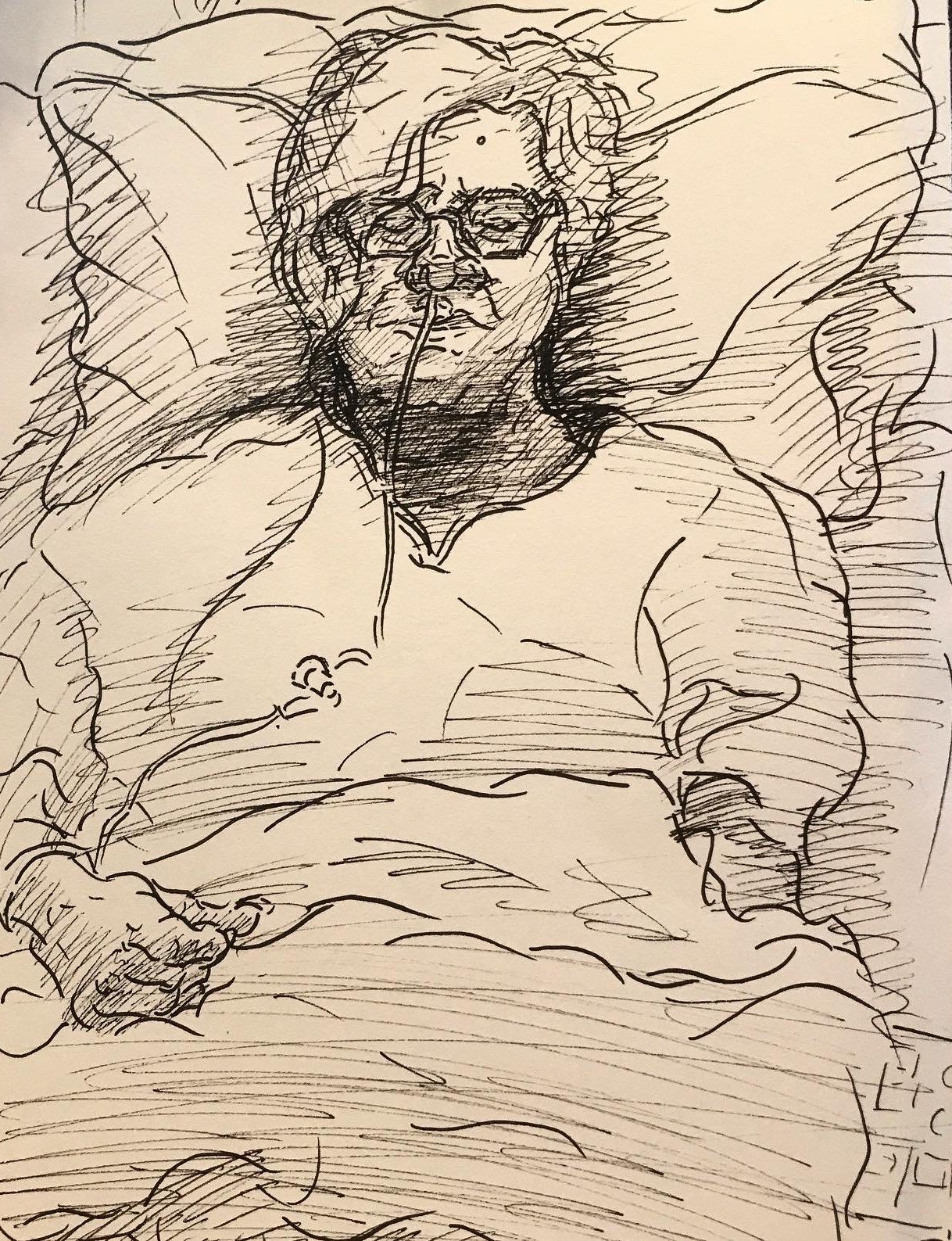Hi y’all,
Welcome back to the blog! After a long . . . long hiatus. Things got a little crazy with a fuller teaching schedule, but I finally have some time to share a bit about the past months with you. Going forward, I’ll try to update the blog closer to once a month.
Most recently, I took part in the Pancakes and Booze show in Denver. I showed several pieces from my hamsa series, as well as one of my skull paintings and “The Dionysian.” Here’s them all together for the show:
From left to right, top to bottom: “Hamsa (Space),” “Hamsa (Blessing),” “The Dionysian,” “Skull #3”
As you might’ve guessed from the title (“Skull #3”), the skull painting is one of several. Here are the others for the curious:
“Skull #2” - 10’’ x 8’’ - oil and acrylic on canvas
“Skull #1” - 11’’ x 8’’ - oil on canvas
As you can see, I started with a lot more color, but to get the effect I was shooting for, I found it actually worked better to use a more limited palette. I’ve had this idea of trying to use color to do what William Blake did with line for some time now. In his drawings and prints, Blake overemphasized contour, making it hard to tell if lines were moving toward or away from you and if they were in the foreground or background, which in turn created some fascinating optical allusions. If you’d like to see some examples (and read more about how this worked), check out Stephen Leo Carr’s “Visionary Syntax: Nontyrannical Coherence in Blake’s Visual Art.”
I had experimented with this idea in abstract paintings before starting the skull series:
“Coherence” - 5’x3’ - mixed media on raw canvas
“Line, Color, Value” - 5’ x 3’ - Mixed media on canvas
but I hadn’t tried it with something representational. Once I did, I found that having a lot of saturated color made the whole thing feel a little like foreground, which was interesting, but not what I was shooting for. What I wanted was a foreground and a background that were constantly shifting, depending on what you look at and how long you look at it for.
What worked much better was to start with a very limited palette — the Zorn palette to be exact — using oil paints, then add a bit of acrylic magenta on top of the oils once they dried:
“Skull #3” - 12’’ x 9’’ - oil and acrylic on canvas
Because the limited palette created a clear background and foreground first, the saturated acrylic was able to move fluidly between them. The shift in texture from the smoother, earthier oils to the more irregular, plasticky acrylic also created a contrast I hadn’t expected. Happy accidents, right?
“Skull #3” has sold, but if you’re interested in the other two, they’re still available — feel free to shoot me a quick email to inquire about them.
The remaining painting, “The Dionysian,” has equally nerdy origins. I began reading Nietzsche’s The Birth of Tragedy the first summer of the pandemic. Apparently, it was really important to Rothko, plus the title seemed apt for the time . . .
“The Dionysian” - 18’’ x 13’’ - oil and acrylic on canvas
In The Birth of Tragedy, Nietzsche argues that there’s an underlying tension in ancient Greek art between what he calls the Dionysian and the Apollonian. The Dionysian, connected to the cult of, you guessed it, Dionysus, embraces the primordial chaos of the universe. Nietzsche identifies more fluid art forms with this impulse — music, lyric poetry, non-representational art. The Apollonian was named for, right again, the cult of Apollo. It tried to redeem the pain of primordial chaos by creating order and beauty — narrative writing and representational art are its chief . . . representatives. In this piece, I wanted the viewer to get mostly swept away into Dionysian chaos but to also have a little bit of Apollonian representation to hold onto.
In other news, I have a poem out in issue no. 6 of Pinky Thinker Press. The poem, “Court Poet for a Night,” came out of a year or so of experiments in which I was looking for ways to unite how I might perform a poem in a spoken word and/or musical context and the way the poem appears on the page. Well, that and being very broke during art school and finding some very strange ways to make money.
I also recently did an interview with Shoutout Colorado. We talked about my transition from casework to the arts, influences, favorite spots in Denver, and more!
I’ve also been continuing to hack away at the (new) angel project. I’ve taken a detour from the Paradise Lost project for a while, focusing instead on the angels as described in Ezekiel I. When I last updated the blog, I had just completed my cartoon of one of the cherubim from Ezekiel’s vision:
12’’ x 9’’ - pen and ink on paper
Since then, I’ve created a fully rendered version:
12.5’’ x 12’’ - charcoal on paper
As you can see, Ezekiel’s cherubim have several heads, only one of which is human. Since I’m not super familiar with lions, eagles, or oxen, I’ve decided to do several oil paint studies before moving onto a full cherub. So far, I’ve completed the lion head:
Oil on canvas - 14’’ x 10’’
and the eagle is under (somewhat painstaking) progress:
14’’ x 10’’ - oil on canvas
Welp, that’s all for now, folks. Thanks for tuning in, and, as always, keep creating!




































